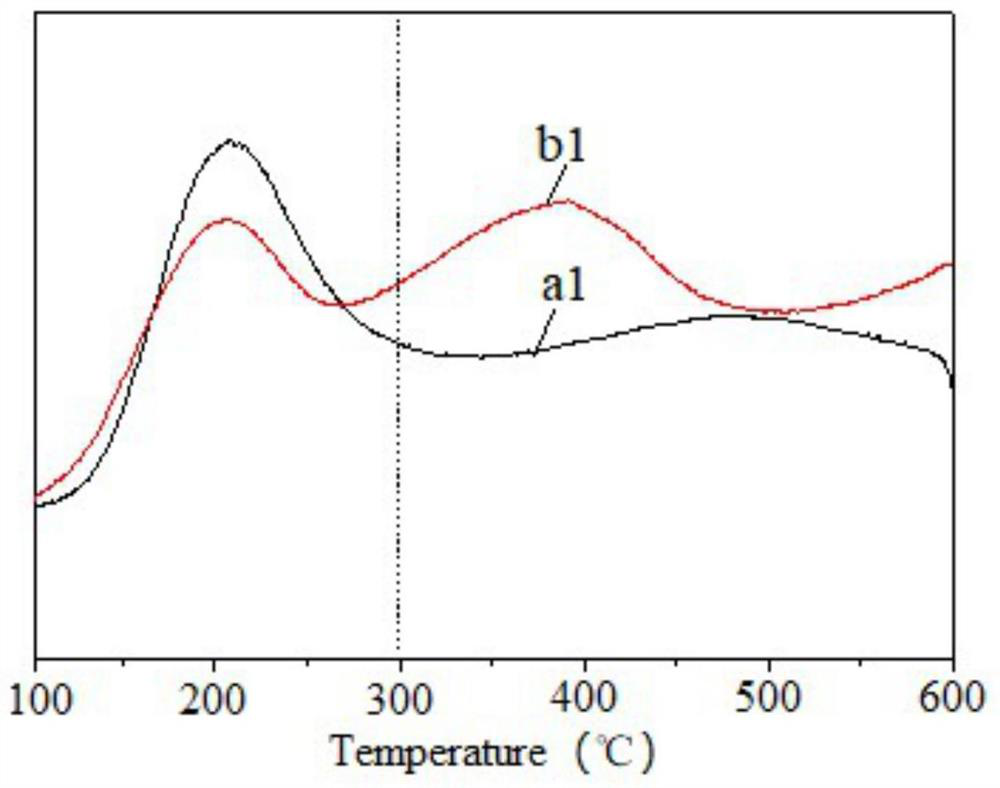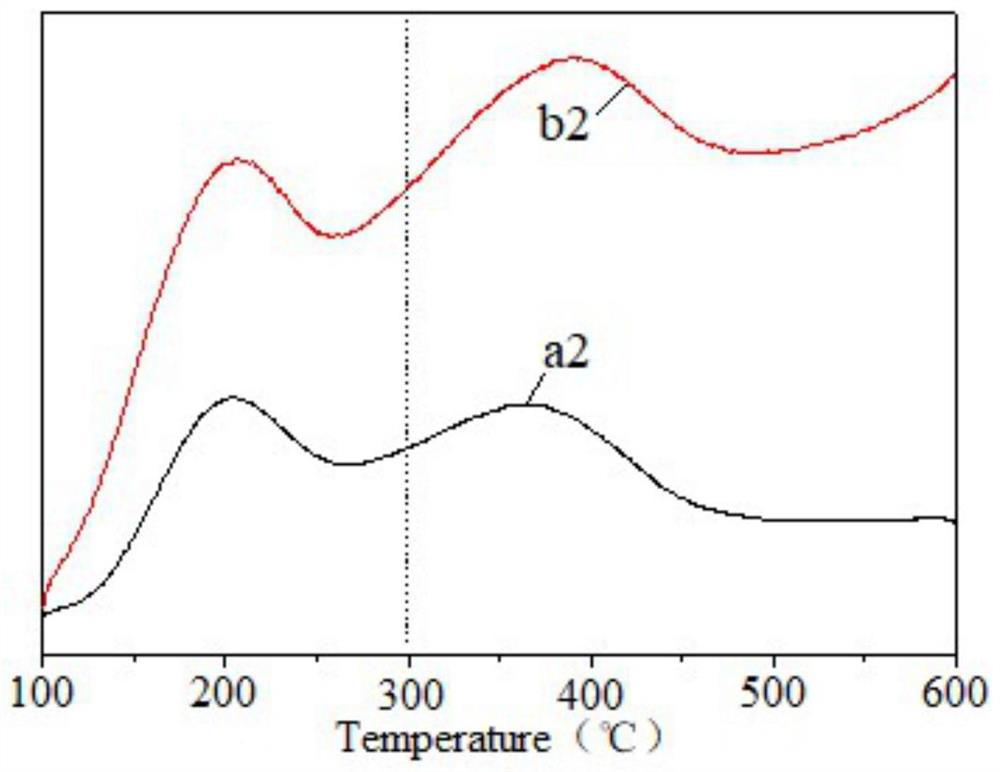Anti-nitrogen aromatic hydrocarbon type hydrocracking catalyst as well as preparation method and application thereof
A hydrocracking and catalyst technology, which is applied in the field of oil refining hydrocracking, can solve the problems of low yield of aromatics and light hydrocarbon chemical materials, insufficient nitrogen resistance of aromatics-type hydrocracking catalysts, etc.
- Summary
- Abstract
- Description
- Claims
- Application Information
AI Technical Summary
Problems solved by technology
Method used
Image
Examples
Embodiment 1
[0093] Take 100 g of the same hydrogen-type zeolite beta (silicon-aluminum ratio SAR=28, SI is 13.01) as in Comparative Example 2, add it to 800 ml of water, then add 23 g of citric acid, and stir evenly. Heat up to 150°C in a self-pressurized stirred tank and keep for 4 hours, cool down to 30°C, filter, wash, and dry for later use. Its steric index was 15.18, as determined by the standard method. carry out NH 3 - TPD characterization, the acid content corresponding to the desorption peak at 300-500 ° C accounts for 65% of the total acid content, see figure 1 .
[0094] 67g dry basis content is 90%, beta zeolite, 37g dry basis content is 70% pseudo-boehmite and 20g amorphous silica-alumina (SiO 2 Content 6wt%, dry basis content 80%) through kneading, extrusion molding. Curing at room temperature for 24 hours, drying at 90°C for 12 hours, and roasting at 550°C for 4 hours in an air atmosphere to obtain a hydrocracking catalyst carrier. Appropriate amount of nickel nitrate ...
Embodiment 2
[0100] In Example 1, 67 g of zeolite beta with a dry basis content of 90% and treated with a polybasic acid and 57 g of pseudo-boehmite with a dry basis content of 70% were kneaded and extruded. Curing at room temperature for 24 hours, drying at 90°C for 12 hours, and roasting at 550°C for 4 hours in an air atmosphere to obtain a hydrocracking catalyst carrier. 6.4g nickel nitrate, 7.8g ammonium molybdate and 20ml ammonia water were dissolved in water to obtain 50ml aqueous solution. Take 50 g of the hydrocracking catalyst carrier, add 40 ml of the solution by equal-volume impregnation and let it stand for 3 hours, dry it at 110° C. for 12 hours, and roast it at 500° C. for 4 hours in an air atmosphere to obtain the hydrocracking catalyst precursor.
[0101] Catalyst presulfidation (according to the usual sulfidation procedure for hydrocracking catalysts): inject a cyclohexane solution containing 0.5% carbon disulfide into a fixed-bed reactor equipped with a hydrocracking cata...
Embodiment 3
[0107]Take 67g of zeolite beta with a dry basis content of 90% in Example 1, which has been treated with a polybasic acid, and 57g of pseudo-boehmite with a dry basis content of 70%, kneading and extruding. Curing at room temperature for 24 hours, drying at 90°C for 12 hours, and roasting at 505°C for 6 hours in an air atmosphere to obtain a hydrocracking catalyst carrier. Prepare a clear solution of chloroplatinic acid and palladium chloride, impregnate the above carrier with an equal volume, dry at 100°C, and roast at 460°C for 6 hours to obtain a catalyst precursor.
[0108] The catalyst precursor was reduced to 480°C under hydrogen and maintained for 12 hours to obtain catalyst C5 with a composition of 0.05wt%Pt-0.15wt%Pd / 59.8wt%β-40wt%Al 2 o 3 , see Table 2.
[0109] Raw material 2 was used, with a nitrogen content of 7.4ppm, and was continuously injected into a fixed-bed reactor filled with catalyst C5. The reaction conditions are: temperature 410°C, pressure 6.0MPa, ...
PUM
 Login to View More
Login to View More Abstract
Description
Claims
Application Information
 Login to View More
Login to View More - R&D
- Intellectual Property
- Life Sciences
- Materials
- Tech Scout
- Unparalleled Data Quality
- Higher Quality Content
- 60% Fewer Hallucinations
Browse by: Latest US Patents, China's latest patents, Technical Efficacy Thesaurus, Application Domain, Technology Topic, Popular Technical Reports.
© 2025 PatSnap. All rights reserved.Legal|Privacy policy|Modern Slavery Act Transparency Statement|Sitemap|About US| Contact US: help@patsnap.com



